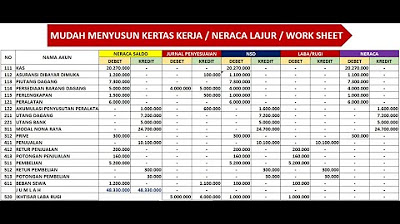JURNAL PEMBELIAN - JB - JURNAL KHUSUS
Summary
TLDRIn this video, Dewi Norsanie provides a comprehensive lesson on the concept of journals in accounting, specifically focusing on purchase journals (JB). She explains how to record transactions involving credit purchases of goods, supplies, and fixed assets. Key points include understanding journal entries with debit and credit columns, and how to apply purchase terms like '2/10 N 30.' Dewi also demonstrates how to record examples such as buying goods, equipment, and supplies on credit. The lesson concludes with a review of the process and a reminder for viewers to engage in the comments with questions.
Takeaways
- 😀 Jurnal Pembelian is used for recording credit purchases made by a company.
- 😀 Credit purchases involve transactions where the company owes money (utang dagang), recorded in the credit column of the journal.
- 😀 Debit entries in Jurnal Pembelian depend on the type of item purchased: 'Pembelian' for goods and 'Serba-serbi' for supplies or fixed assets.
- 😀 Purchasing transactions can include buying goods, supplies, or fixed assets on credit.
- 😀 The journal's structure has fixed accounts for credit, with 'utang dagang' being the only account used in the credit column.
- 😀 When buying goods on credit, the 'Pembelian' account is debited, while 'utang dagang' is credited.
- 😀 For supplies or fixed assets, 'Serba-serbi' is debited, with 'utang dagang' credited.
- 😀 The speaker emphasizes the importance of balancing debits and credits to ensure the journal's accuracy.
- 😀 Example transactions include buying goods on credit from various suppliers, as well as purchasing supplies and fixed assets like equipment and vehicles on credit.
- 😀 A special case is when a transaction involves both cash and credit payments, in which case it is best recorded in the general journal instead of the purchasing journal.
- 😀 The lesson concludes with a reminder to verify that the total debits match the total credits, ensuring the journal entries are correct.
Q & A
What is the purpose of a purchase journal (jurnal pembelian)?
-The purpose of a purchase journal is to record all credit-based purchases, which increase the company's liabilities (utang dagang). This includes purchases of goods, supplies, and fixed assets made on credit.
What types of transactions are recorded in the purchase journal?
-Transactions recorded in the purchase journal include purchasing merchandise, supplies, or fixed assets on credit. Each of these purchases will lead to an increase in the company's debts, specifically in the account 'utang dagang' (accounts payable).
How is a purchase journal structured in terms of debit and credit entries?
-In the purchase journal, the debit entry is made in the 'pembelian' (purchase) account for merchandise purchases and in the 'serba-serbi' account for other purchases. The credit entry is always made to the 'utang dagang' (accounts payable) account.
What does the term '2/10 N/30' mean in a purchase transaction?
-'2/10 N/30' is a payment term indicating that the buyer can receive a 2% discount if the payment is made within 10 days, and the full payment is due within 30 days from the transaction date.
How do you fill out the purchase journal for a merchandise purchase on credit?
-For a merchandise purchase on credit, the date, transaction amount, and payment terms (e.g., 2/10 N/30) are entered. In the debit column, 'pembelian' is selected, and in the credit column, 'utang dagang' is entered with the purchase amount.
What should be done if a transaction includes a mix of cash and credit payments?
-If a transaction includes both cash and credit payments, it is recommended to record it in the general journal instead of the purchase journal. This is because the purchase journal only allows for 'utang dagang' in the credit column, and the transaction involving both cash and credit requires separate entries.
What happens if the debit and credit columns do not balance in the purchase journal?
-If the debit and credit columns do not balance, it indicates an error in the journal entries. The entries should be reviewed and corrected to ensure that the total debit equals the total credit, as per the double-entry bookkeeping system.
What is the importance of verifying the totals in the purchase journal?
-Verifying the totals ensures the accuracy and consistency of the journal entries. It confirms that all transactions are recorded correctly and that the debit and credit amounts are equal, which is fundamental in maintaining accurate financial records.
Why are some purchases recorded under the 'serba-serbi' account instead of the 'pembelian' account?
-Purchases that are not merchandise, such as supplies or fixed assets, are recorded under the 'serba-serbi' account instead of 'pembelian'. This allows for proper categorization of different types of purchases within the journal.
What is the recommended approach for recording purchases of fixed assets on credit?
-When recording purchases of fixed assets on credit, the 'serba-serbi' account is used to debit the purchase amount, and 'utang dagang' is credited. This is because fixed assets are categorized separately from merchandise and supplies.
Outlines

Esta sección está disponible solo para usuarios con suscripción. Por favor, mejora tu plan para acceder a esta parte.
Mejorar ahoraMindmap

Esta sección está disponible solo para usuarios con suscripción. Por favor, mejora tu plan para acceder a esta parte.
Mejorar ahoraKeywords

Esta sección está disponible solo para usuarios con suscripción. Por favor, mejora tu plan para acceder a esta parte.
Mejorar ahoraHighlights

Esta sección está disponible solo para usuarios con suscripción. Por favor, mejora tu plan para acceder a esta parte.
Mejorar ahoraTranscripts

Esta sección está disponible solo para usuarios con suscripción. Por favor, mejora tu plan para acceder a esta parte.
Mejorar ahoraVer Más Videos Relacionados

Cara Menyusun Jurnal Penyesuaian

Journals | Odoo Accounting

Jurnal Penutup, Buku besar setelah penutupan, Neraca saldo setelah penutupan | PART 3

KERTAS KERJA - NERACA LAJUR - WORK SHEET - PERUSAHAAN DAGANG

AKUNTANSI UNTUK PENDIRIAN FIRMA : Latihan Soal Laba dan Rugi bagi anggota Firma

Vídeo Aula Exemplo Procedimentos Contábeis Básicos
5.0 / 5 (0 votes)
